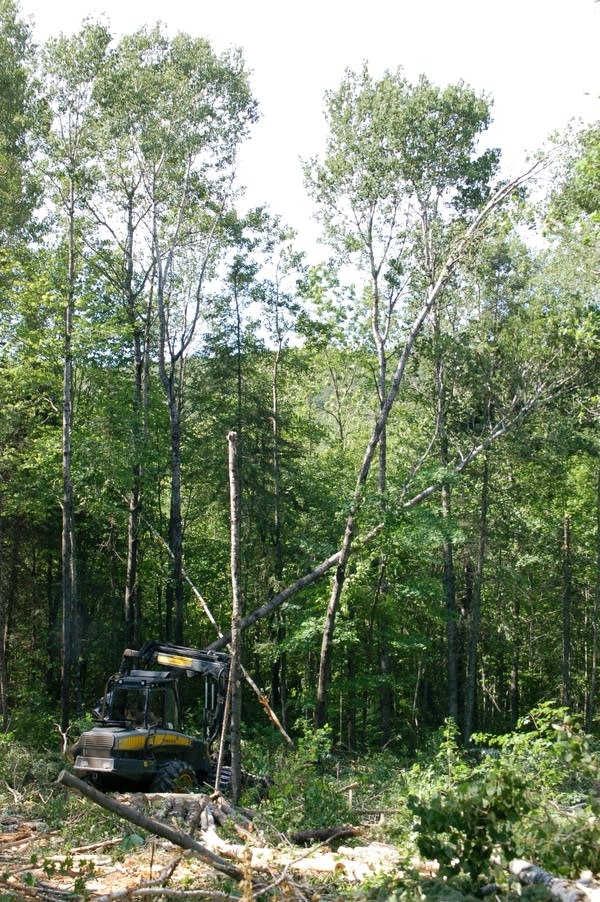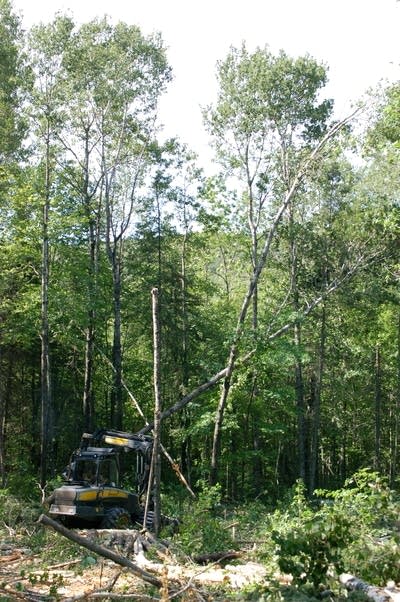Outdoors money paves way for state's largest forest preservation deal
Go Deeper.
Create an account or log in to save stories.
Like this?
Thanks for liking this story! We have added it to a list of your favorite stories.

The largest preservation deal in state history will permanently keep nearly 190,000 acres of northern Minnesota forests from being developed.
Taxpayers will spend $36 million on the forest preservation deal -- one of the 10 largest conservation easement projects in the country.
It gives the state permanent land rights and ensures public access to more than 187,000 acres of privately owned forest land scattered over seven counties. That's a total of about 300 square miles, mostly in Itasca County (map) near Grand Rapids.
Minnesota's sales tax went up this month by three-eighths of a percent as voters amended the state constitution last year to pay for outdoor and cultural initiatives.
Turn Up Your Support
MPR News helps you turn down the noise and build shared understanding. Turn up your support for this public resource and keep trusted journalism accessible to all.
The higher tax will raise about $500 million over the next two years. and the largest share of that new money for a single project will permanently preserve nearly 190,000 acres of forest land in northern Minnesota.
Mike Kilgore, who heads the state Outdoor Heritage Council that decided the project was worth funding, said the easement deal is money well spent.
"It buys the types of rights that the citizens of Minnesota would have an interest in, which is to keep that land in a sustainably managed forest condition, producing timber for jobs in northern Minnesota, providing access for outdoor recreation and wildlife habitat," said Kilgore, a forest resources professor at the University of Minnesota. "And those are all the things that I think everyone in Minnesota wants to see."
The forests are owned by the UPM Blandin paper company. Blandin will still own the land and will continue to manage it for timber harvesting, and they'll continue to pay property taxes, while Blandin will recieve $45 million dollars from the deal. That includes the state money, plus $9 million in private dollars from the Conservation Fund, a national non-profit organization.
UPM Blandin officials in Minnesota did not return phone calls seeking comment for this story. The company has said it plans no changes for the forests and will continue to follow state sustainable management guidelines.
While the easement keeps the land forever open to hunters, hikers and trail users, it also places a key restriction on Blandin. While the company is free to sell the land, it can never be developed or split up into smaller chunks.
That's important, said Tom Duffus, the Conservation Fund's upper Midwest director, because Northern Minnesota forests have increasingly become a checkerboard of mixed ownership and land is split into smaller and smaller parcels.
Duffus said conservation easements like this one protect forests from further fragmentation.
"This is an enormous problem here," he said. "It's been creeping up on us in Minnesota over the past 20 years and we've been virtually unaware of it, and I think that's because...we've been complacent in thinking that industrial lands will always be there, and that's just not the case."
Timber companies are the largest private landowners in the state. Those lands were often open for public use, but in recent years, companies such as Boise and Potlatch have leased or sold off their vast land holdings to investors.
A University of Minnesota study shows that as forest land is divided into smaller and smaller chunks, it doesn't take long before the forests are cleared for roads, homes and commercial structures.
Duffus said that means Minnesota is slowly losing one of its most valuable resources.
"What this ends up doing is it cuts off access for the public," he said. "It fragments the forest habitat from an environmental standpoint. It also renders properties smaller and smaller and smaller, so that it's more difficult, increasingly difficult to manage the lands for forest products and forest habitats."
The Minnesota Department of Natural Resources has identified a million acres of undeveloped forest at risk of being broken up or sold.
Craig Engwall, the DNR's northeast regional director in Grand Rapids, said putting forest lands into conservation easement is a slow and expensive process.
"There is the potential out there for more," Engwall said. "There really is a demand out there, so we see the funds generated from the Legacy Amendment as key to addressing this issue."
The new money from Minnesota's Clean Water, Land and Legacy sales tax increase will fund an array of water, habitat, park and arts projects worth more than $400 million over the next two years.
The conservation deal between the state and UPM Blandin Paper will be finalized late next year.
Dear reader,
Political debates with family or friends can get heated. But what if there was a way to handle them better?
You can learn how to have civil political conversations with our new e-book!
Download our free e-book, Talking Sense: Have Hard Political Conversations, Better, and learn how to talk without the tension.




